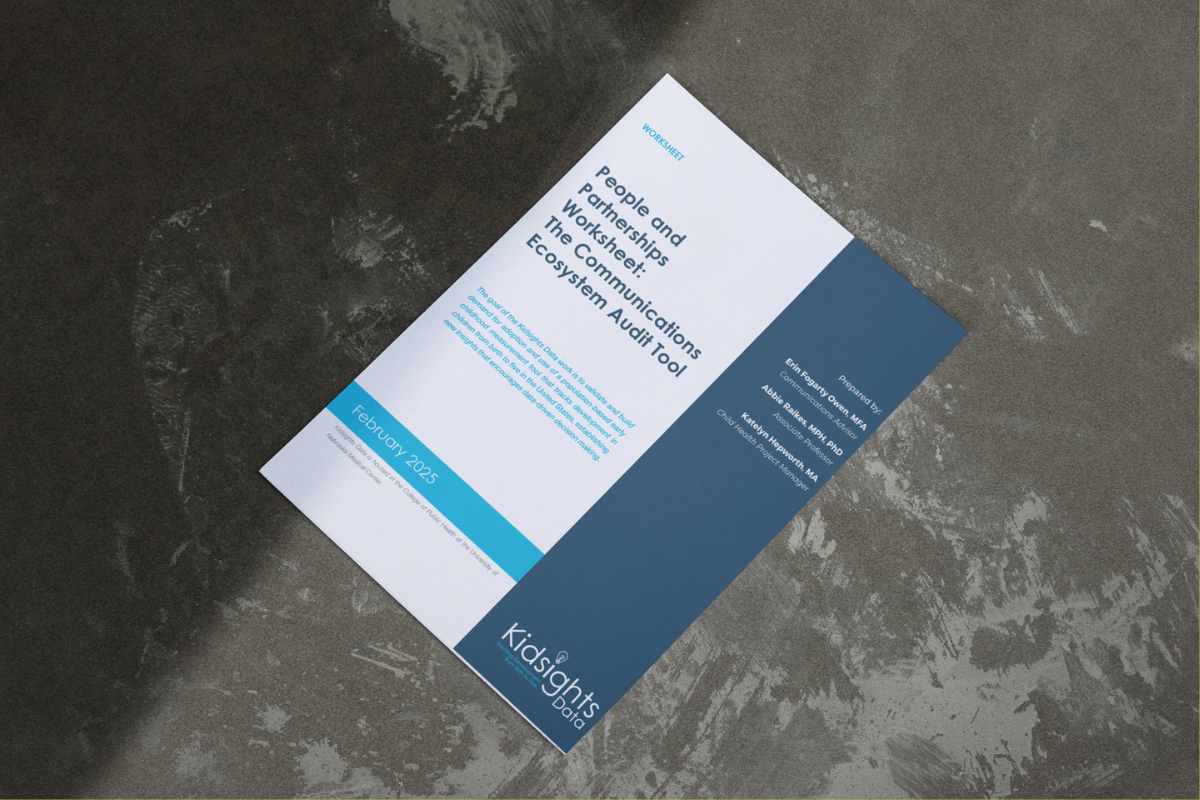Resource: The People and Partnerships Worksheet
At The EO Report we’re always working to build and share tools that help organizations listen and communicate better and collaborate more effectively. That’s why we’re excited to share a resource developed in collaboration with our partner at Kidsights Data: the People and Partnerships Worksheet.
Kidsights Data
We work with Kidsights Data through our communications work at Clarity Channels Communications (the home of The EO Report), and they’re doing something that no one has done before: tracking population-level child development data from birth to age five. Until recently, data like this wasn’t available at scale in the U.S., and certainly not in ways that allow communities to measure developmental progress at the state level.
But analyzing this data is only part of the equation. To collect his data and act on it, to help it spark change, the team at Kidsights Data understands that you need the right people at the table. Enter the People and Partnerships Worksheet.
A Tool for Mapping Influence
Originally created to support communities and organizations working with Kidsights Data, this worksheet is designed to help local leaders assess their communications ecosystems. Who holds influence? What relationships already exist? Where are the gaps?
The tool walks users through a set of framing questions to document key stakeholders, people and organizations with the capacity to shape perceptions, build trust, and help carry the work forward. It’s not just about who you know. It’s about understanding how the system around you works, and how you might partner within it more strategically.
How Can You Use This Tool?
While the worksheet was originally developed for those using Kidsights Data, its usefulness doesn’t stop there. Any organization looking to build coalitions, understand their local landscape, or communicate more effectively across sectors will find it valuable.
In short, it’s a powerful brainstorming tool that asks the hard questions for you: Who needs to be in the room? Why does our work matter to them? How do we get to them? And how can we work together?
Why Strategic Partnerships Matter
Strategic partnerships aren't just nice to have. When you’re working with limited time, budget, or staff, they’re essential. A good partner can:
Amplify your message and extend your reach
Introduce your work to new audiences
Share tools, knowledge, and trust
Help you do more with less
When done right, partnerships are reciprocal and rooted in shared outcomes. They allow you to align your goals with those of others in your area, making your message not just louder, but smarter. The People and Partnerships Worksheet helps you find the right partners to do just that.
